Get free scan and check if your device is infected.
Remove it nowTo use full-featured product, you have to purchase a license for Combo Cleaner. Seven days free trial available. Combo Cleaner is owned and operated by RCS LT, the parent company of PCRisk.com.
What is the fake "cPanel" email?
"cPanel email scam" refers to a phishing spam campaign, a large-scale operation during which thousands of deceptive emails are sent. These email messages are disguised as notifications from the cPanel company, developers of web hosting control panel software of the same name.
At the time of research, there were two variants of this scam. One, a notification concerning privacy policy updates, the other notifies recipients that their website has been suspended. Note that these emails are in no way associated with the genuine cPanel, LLC.
This spam campaign aims to extract sensitive information (i.e., cPanel log-in credentials) via an HTML file attached to the scam messages.
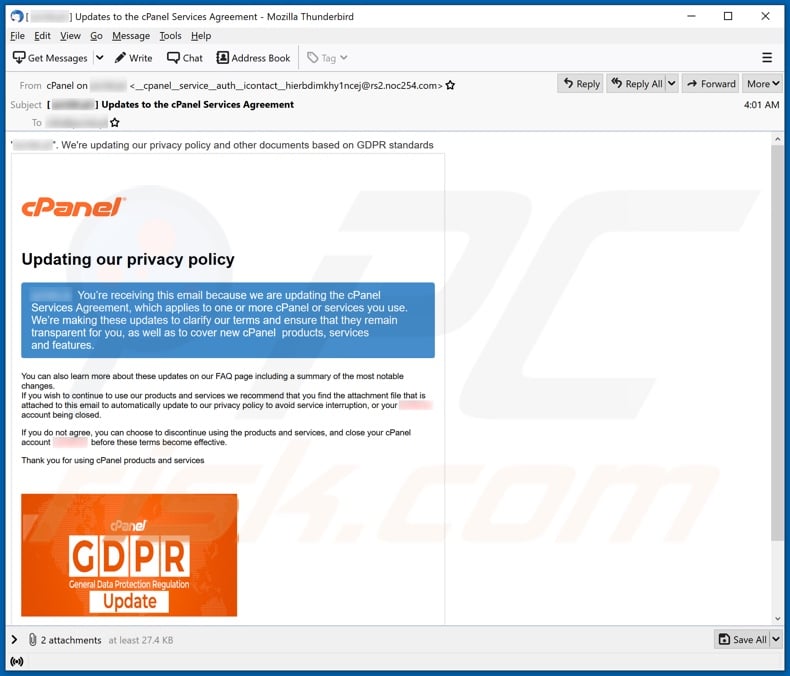
More about the cPanel phishing email
The email with the title/subject "[ ******** ] Updates to the cPanel Services Agreement" (this may vary) informs recipients that cPanel is updating their privacy policy in accordance with the GDPR (General Data Protection Regulation). The message then goes into more detail about the necessity of the notification.
The recipient is urged to use the attached file to automatically update to the new privacy policy. Should they disagree with the policy changes, the recipient is alerted that they will no longer be able to use cPanel's products and services, and their account will be deactivated.
The message with the title/subject "Suspension : Removal of ******** from our server" (also may vary) states that the recipient's website's deactivation and removal from cPanel's servers has been approved and initiated. The supposed reason is a last warning, which was ignored.
If the recipient wishes to stop the process, they are instructed to use the file attachment.
Once the attached HTML file is opened, it asks users to sign in to their cPanel account with their domain name, panel username and password. Allegedly, doing so will automatically update the account in compliance with the new privacy policy.
Instead, by attempting to log-in in this manner, users will expose their log-in credentials to the scammers behind the fake "cPanel" emails. Therefore, by trusting the scam notifications, users can lose their cPanel accounts and unintentionally allow the scammers access/control over the account and its content (e.g., websites).
To summarize, this can result in severe privacy issues, financial losses, identity theft, and other serious problems. If attempts to sign-in have already been made, change the log-in credentials immediately and contact cPanel's official support.
| Name | cPanel Email Scam |
| Threat Type | Phishing, Scam, Social Engineering, Fraud |
| Fake Claim | One variant claims recipients need to update their account; the other - that their account will be deactivated unless they update it. |
| Disguise | Notifications from cPanel |
| Detection Names (malicious html attachment used for phishing) | Ad-Aware (Trojan.GenericKD.36626880), BitDefender (Trojan.GenericKD.36626880), Fortinet (JS/Agent.RA!tr), Emsisoft (Trojan.GenericKD.36626880 (B)), Microsoft (Trojan.GenericKD.36626880), Full List Of Detections (VirusTotal) |
| Symptoms | Unauthorized online purchases, changed online account passwords, identity theft, illegal access of the computer. |
| Distribution methods | Deceptive emails, rogue online pop-up ads, search engine poisoning techniques, misspelled domains. |
| Damage | Loss of sensitive private information, monetary loss, identity theft. |
| Malware Removal (Windows) |
To eliminate possible malware infections, scan your computer with legitimate antivirus software. Our security researchers recommend using Combo Cleaner. Download Combo CleanerTo use full-featured product, you have to purchase a license for Combo Cleaner. 7 days free trial available. Combo Cleaner is owned and operated by RCS LT, the parent company of PCRisk.com. |
Examples of similar scams
"Facebook Email Scam", "Fund Release", "Microsoft Teams Email Scam", "INTERNATIONAL MONETARY FUND (IMF)", and "Email Account Is Almost Full" are some examples of other spam campaigns.
Despite the legitimate appearance, the sole purpose of these messages is to generate revenue for the scammers/cyber criminals behind them. As well as phishing and similar scams, deceptive emails are also used to proliferate malware (e.g., trojans, ransomware, cryptocurrency miners, etc.).
Due to the widespread prevalence of spam mail, exercise caution with incoming emails.
How do spam campaigns infect computers?
Malware (including ransomware) is usually distributed via malspam campaigns, unofficial software activation ('cracking') tools, Trojans, dubious file/software download sources, and fake software updating tools.
When cyber criminals attempt to distribute malware via malspam campaigns, they send emails that contain malicious attachments or download links for malicious files. Typically, they disguise their emails as official and important. If recipients open the attached file (or a file downloaded via a website link), they cause installation of malicious software.
Cyber criminals commonly attach executable files (.exe), archive files such as RAR, ZIP, PDF documents, JavaScript files and Microsoft Office documents to their emails. Software 'cracking' tools supposedly activate licensed software illegally (bypass activation), however, they often install malicious programs and do not activate any legitimate installed software.
Trojans are other rogue programs that can cause chain infections. I.e., when a Trojan is installed on the operating system, it can install additional malware.
Free file hosting websites, freeware download websites, Peer-to-Peer networks (e.g., torrent clients, eMule), unofficial websites, and third party downloaders are examples of other sources that are used to distribute malware. Cyber criminals disguise malicious files as legitimate and regular. When users download and open them, they inadvertently infect their computers with malware.
Fake software updating tools install malicious software rather than updates/fixes for installed programs, or they exploit bugs/flaws of outdated software that is installed on the operating system.
How to avoid installation of malware
To avoid malware spread via spam mail, you are strongly advised against opening suspicious or irrelevant emails, especially those with any attachments or links present within them.
Additionally, use Microsoft Office versions released after 2010. Malicious programs also proliferate through untrusted download channels (e.g. unofficial and free file-hosting sites, Peer-to-Peer sharing networks and other third party downloaders), illegal software activation ("cracking") tools, and fake updaters.
Therefore, only download from official/verified sources and activate and update software with tools/functions provided by legitimate developers.
To ensure device integrity and user privacy, have a reputable anti-virus/anti-spyware suite installed and kept updated. Furthermore, use these programs to run regular system scans and to remove detected/potential threats.
If you have already opened malicious attachments, we recommend running a scan with Combo Cleaner Antivirus for Windows to automatically eliminate infiltrated malware.
Text presented in one variant of the "cPanel" scam email:
Subject: [ ******** ] Updates to the cPanel Services Agreement
"********". We're updating our privacy policy and other documents based on GDPR standards
cPanel
Updating our privacy policy
******** You’re receiving this email because we are updating the cPanel Services Agreement, which applies to one or more cPanel or services you use. We’re making these updates to clarify our terms and ensure that they remain transparent for you, as well as to cover new cPanel products, services and features.
You can also learn more about these updates on our FAQ page including a summary of the most notable changes.
If you wish to continue to use our products and services we recommend that you find the attachment file that is attached to this email to automatically update to our privacy policy to avoid service interruption, or your ******** account being closed.
If you do not agree, you can choose to discontinue using the products and services, and close your cPanel account ******** before these terms become effective.
Thank you for using cPanel products and services
cP
Copyright© 2021 cPanel, Inc.
Screenshot of the alternative variant of the "cPanel" scam email:
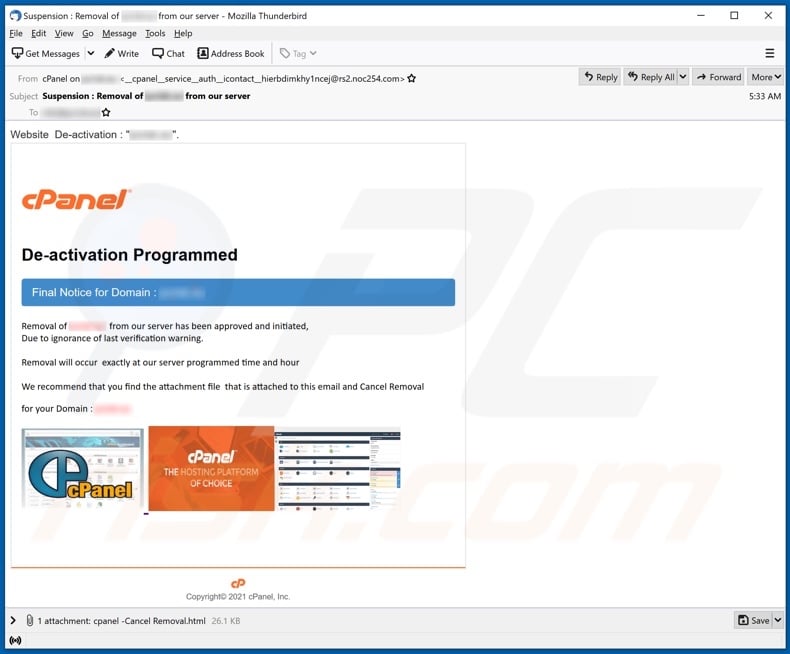
Text presented in this variant:
Subject: Suspension : Removal of ******** from our server
Website De-activation : "********".
De-activation Programmed
Final Notice for Domain : ********
Removal of ******** from our server has been approved and initiated,
Due to ignorance of last verification warning.
Removal will occur exactly at our server programmed time and hour
We recommend that you find the attachment file that is attached to this email and Cancel Removal
for your Domain : ********
cP
Copyright© 2021 cPanel, Inc.
Screenshot of the "cPanel" scam email file attachment:
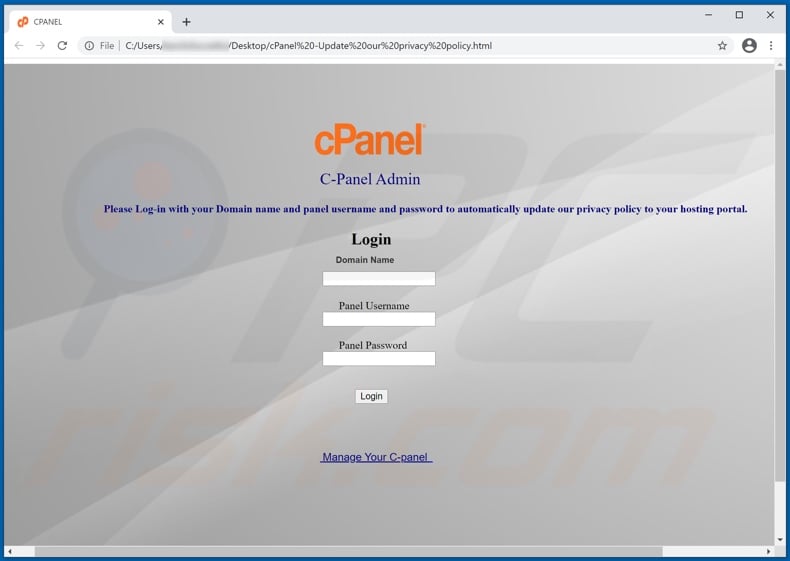
Another cPanel-themed spam email claiming that user has pending messages:
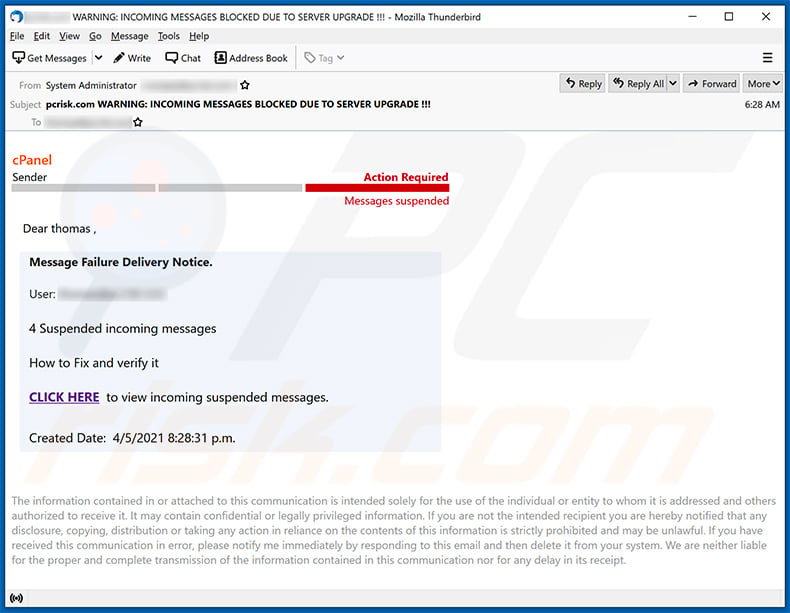
Text presented within:
Subject: - WARNING: INCOMING MESSAGES BLOCKED DUE TO SERVER UPGRADE !!!
cPanel
Sender Action Required
Messages suspended
Dear ********,Message Failure Delivery Notice.
User: ********
4 Suspended incoming messages
How to Fix and verify it
CLICK HERE to view incoming suspended messages.
Created Date: 4/5/2021 8:28:31 p.m.
The information contained in or attached to this communication is intended solely for the use of the individual or entity to whom it is addressed and others authorized to receive it. It may contain confidential or legally privileged information. If you are not the intended recipient you are hereby notified that any disclosure, copying, distribution or taking any action in reliance on the contents of this information is strictly prohibited and may be unlawful. If you have received this communication in error, please notify me immediately by responding to this email and then delete it from your system. We are neither liable for the proper and complete transmission of the information contained in this communication nor for any delay in its receipt.
Screenshot of the promoted phishing website:

Yet another variant of cPanel-themed spam email:
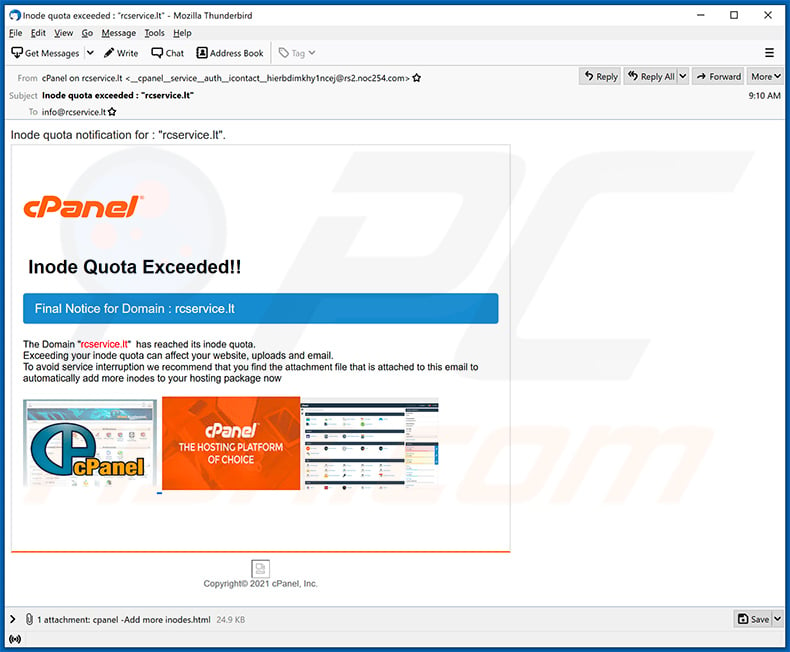
Text presented within:
Subject: Inode quota exceeded : ********"
Inode quota notification for : ********".
Inode Quota Exceeded!!
Final Notice for Domain : ********
The Domain ********" has reached its inode quota.
Exceeding your inode quota can affect your website, uploads and email.
To avoid service interruption we recommend that you find the attachment file that is attached to this email to
automatically add more inodes to your hosting package nowCopyright© 2021 cPanel, Inc.
Yet another example of cPanel-themed spam email:
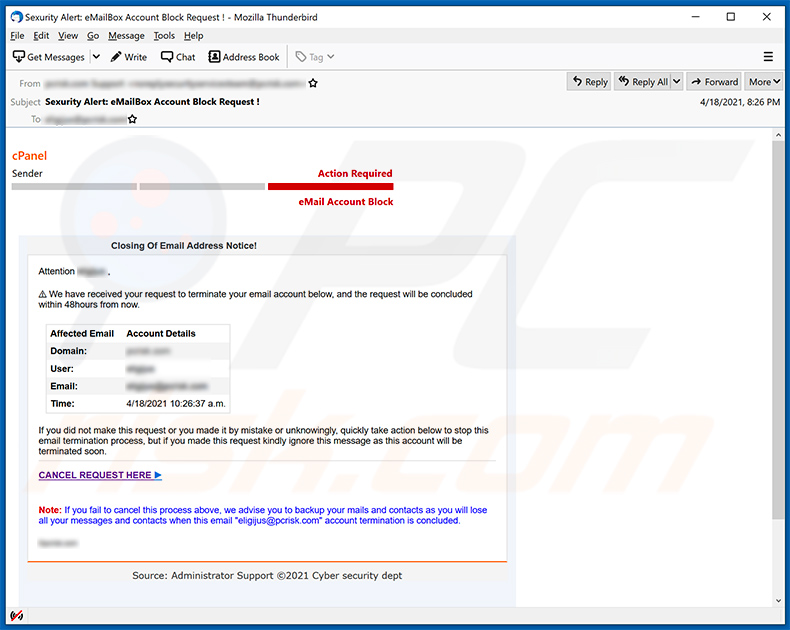
Text presented within:
Subject: Sexurity Alert: eMail Box Account Block Request !
cPanel Sender
Action Required
eMail Account Block
Closing Of Email Address Notice!Attention ******** ,
We have received your request to terminate your email account below, and the request will be concluded within 48hours from now.
Affected Email Account Details
Domain: ********
User: ********
Email: ********
Time: 4/18/2021 10:26:37 a.m.If you did not make this request or you made it by mistake or unknowingly, quickly take action below to stop this email termination process, but if you made this request kindly ignore this message as this account will be terminated soon.
CANCEL REQUEST HERE ▶
Note: If you fail to cancel this process above, we advise you to backup your mails and contacts as you will lose all your messages and contacts when this email "********" account termination is concluded.©********
Source: Administrator Support ©2021 Cyber security dept
Another example of cPanel-themed spam email promoting a phishing site:
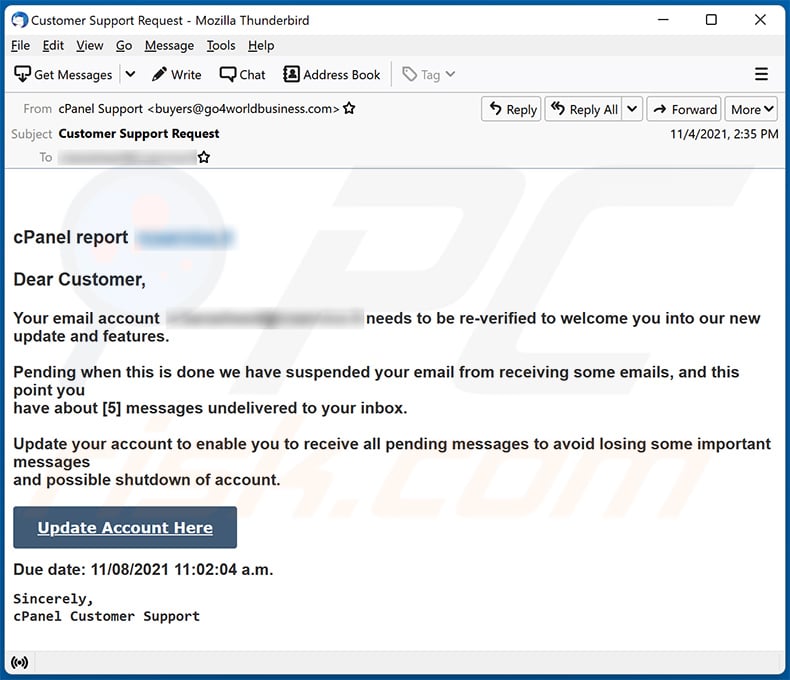
Text presented within:
Subject: Customer Support Request
cPanel report -Dear Customer,
Your email account - needs to be re-verified to welcome you into our new update and features.
Pending when this is done we have suspended your email from receiving some emails, and this point you
have about [5] messages undelivered to your inbox.Update your account to enable you to receive all pending messages to avoid losing some important messages
and possible shutdown of account.Update Account Here
Due date: 11/08/2021 11:02:04 a.m.
Sincerely,
cPanel Customer Support
Another example of cPanel-themed spam email promoting a phishing site:
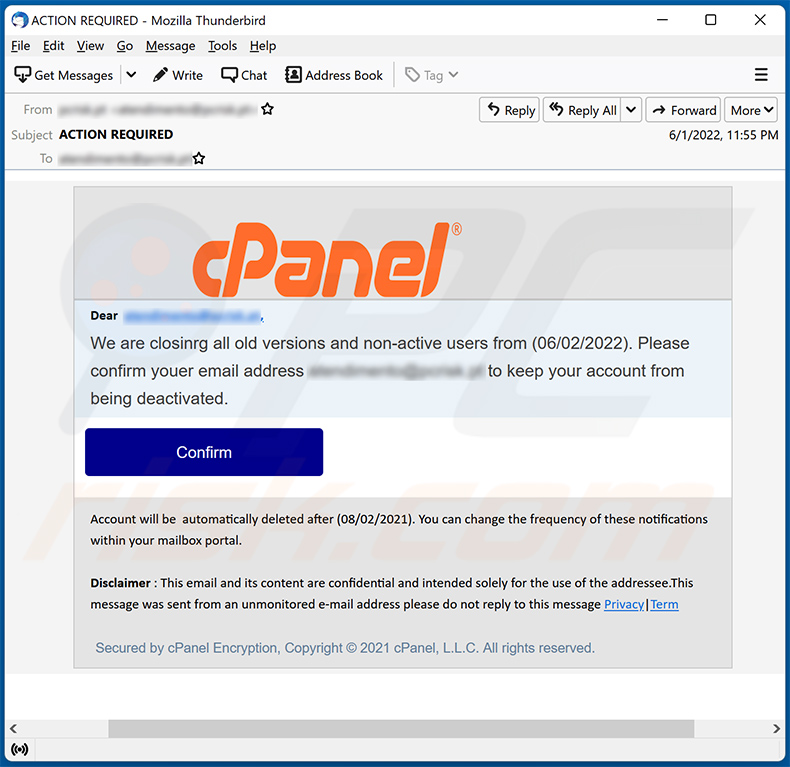
Text presented within:
Subject: ACTION REQUIRED
Dear -,We are closinrg all old versions and non-active users from (06/02/2022). Please confirm youer email address - to keep your account from being deactivated.
Confirm
Account will be automatically deleted after (08/02/2021). You can change the frequency of these notifications within your mailbox portal.Disclaimer : This email and its content are confidential and intended solely for the use of the addressee.This message was sent from an unmonitored e-mail address please do not reply to this message Privacy|Term
Secured by cPanel Encryption, Copyright © 2021 cPanel, L.L.C. All rights reserved.
Screenshot of the promoted phishing site:
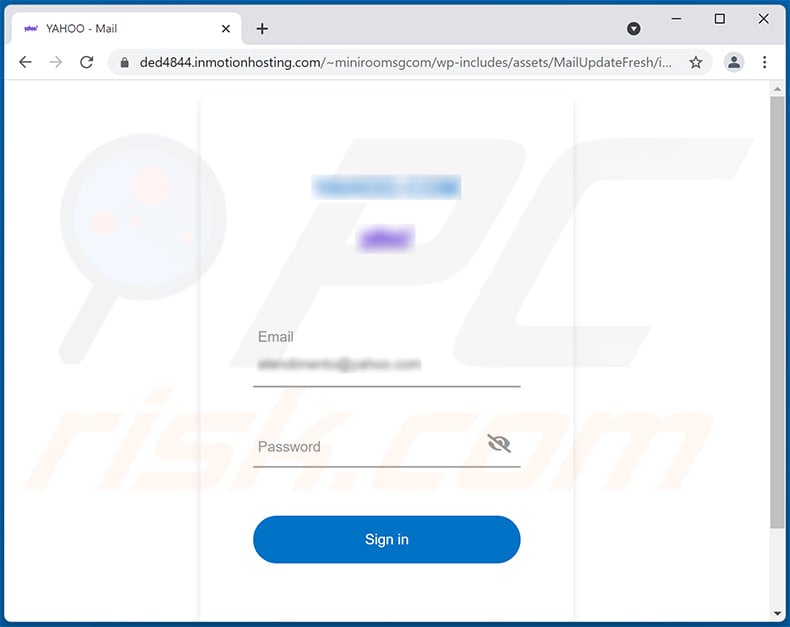
Yet another example of cPanel-themed spam email promoting a phishing site:
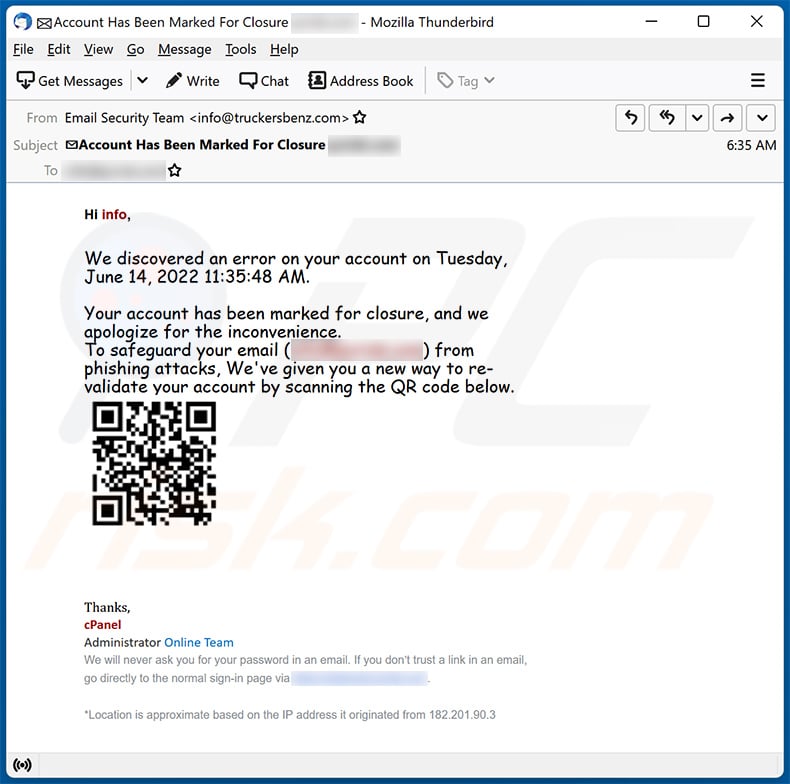
Text presented within:
Subject: Account Has Been Marked For Closure ********
Hi -,
We discovered an error on your account on Tuesday, June 14, 2022 11:35:48 AM.
Your account has been marked for closure, and we apologize for the inconvenience.
To safeguard your email (********) from phishing attacks, We've given you a new way to re-validate your account by scanning the QR code below.Thanks,
cPanel
Administrator Online Team
We will never ask you for your password in an email. If you don’t trust a link in an email, go directly to the normal sign-in page via ********.
*Location is approximate based on the IP address it originated from 182.201.90.3
Screenshot of the promoted phishing site:
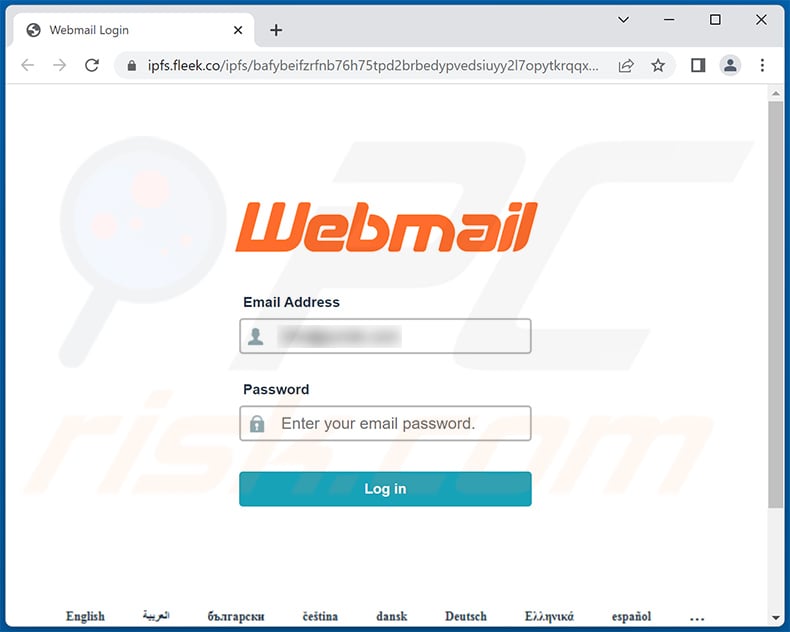
Yet another example of cPanel-themed spam email promoting a phishing site:
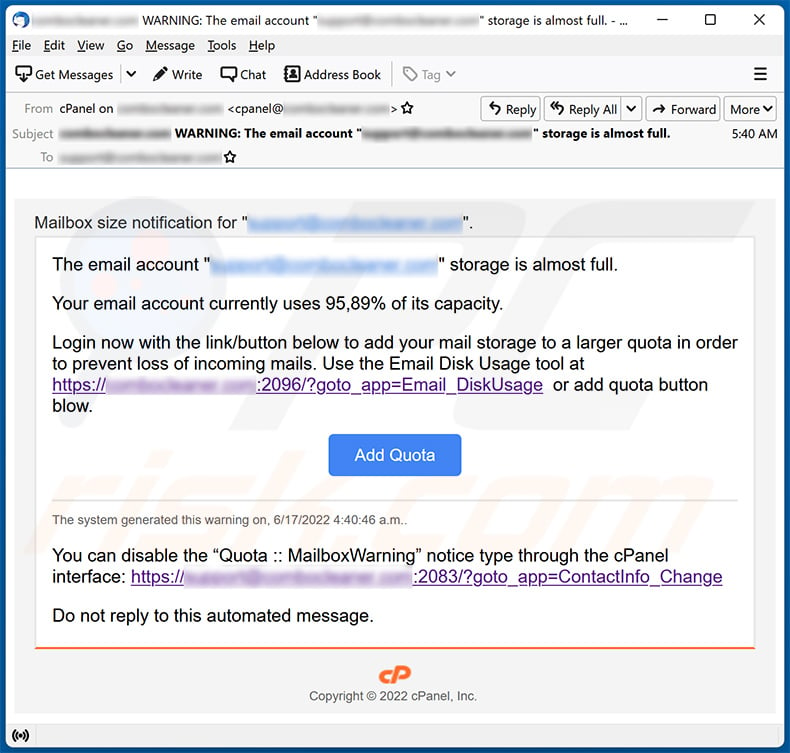
Text presented within:
Subject: ******** WARNING: The email account "********" storage is almost full.
Mailbox size notification for "********".
The email account "********" storage is almost full.
Your email account currently uses 95,89% of its capacity.Login now with the link/button below to add your mail storage to a larger quota in order to prevent loss of incoming mails. Use the Email Disk Usage tool at hxxps://********:2096/?goto_app=Email_DiskUsage or add quota button blow.
Add QuotaThe system generated this warning on, 6/17/2022 4:40:46 a.m..
You can disable the “Quota :: MailboxWarning” notice type through the cPanel interface: hxxps://********:2083/?goto_app=ContactInfo_Change
Do not reply to this automated message.
cpanel
Copyright © 2022 cPanel, Inc.
Yet another example of cPanel-themed spam email promoting a phishing site:
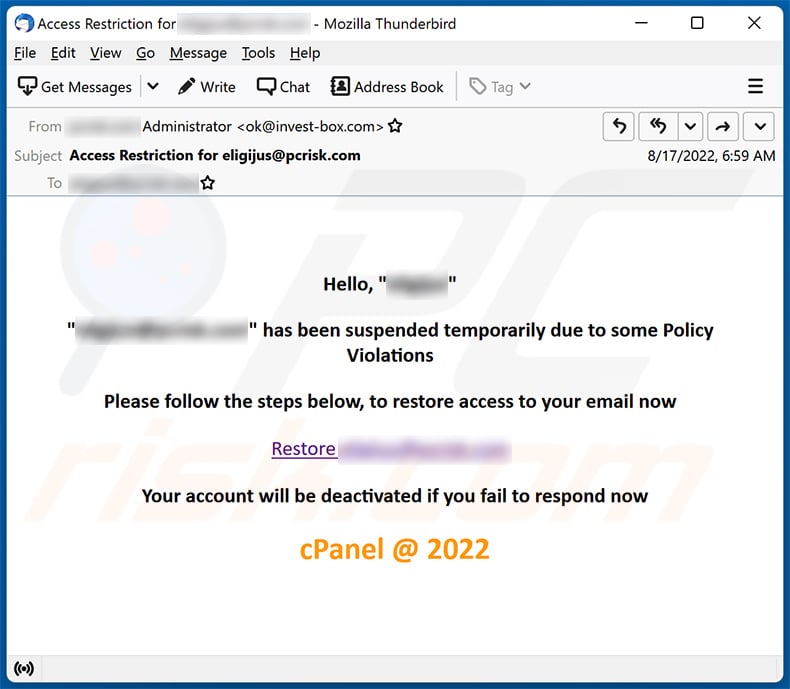
Text presented within:
Subject: Access Restriction for **********
Hello, "**********""**********" has been suspended temporarily due to some Policy Violations
Please follow the steps below, to restore access to your email now
Restore **********
Your account will be deactivated if you fail to respond now
cPanel @ 2022
Yet another example of cPanel-themed spam email used to promote a phishing site:
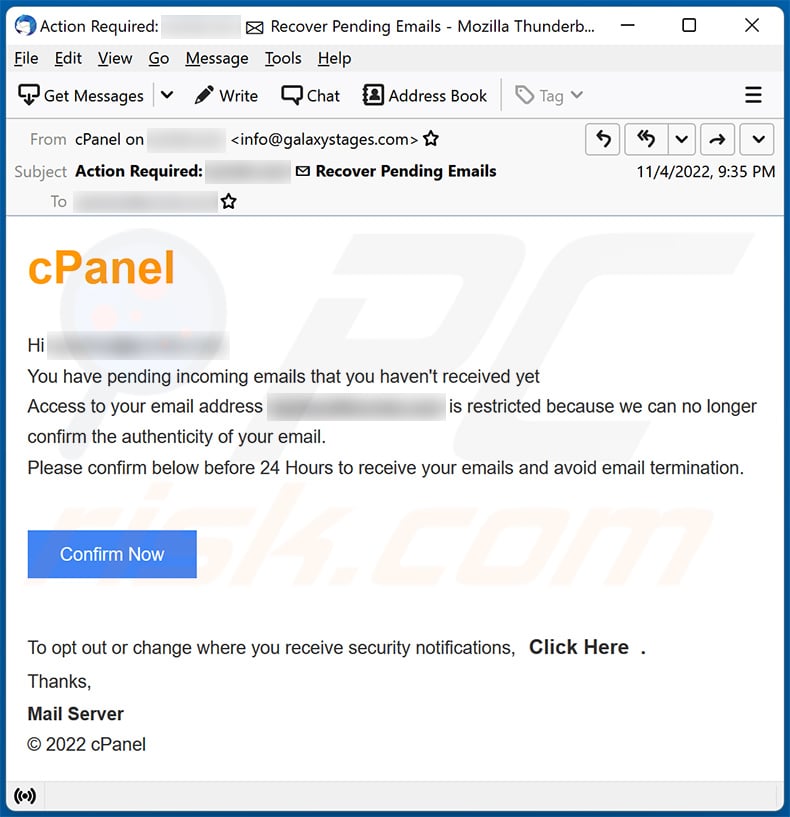
Text presented within:
Subject: Action Required: ******** Recover Pending Emails
cPanel
Hi ********
You have pending incoming emails that you haven't received yet
Access to your email address ******** is restricted because we can no longer confirm the authenticity of your email.Please confirm below before 24 Hours to receive your emails and avoid email termination.
Confirm Now
To opt out or change where you receive security notifications, Click Here .
Thanks,
Mail Server
© 2022 cPanel
Screenshot of the promoted phishing site designed to imitate the design of user's email service provider's website:
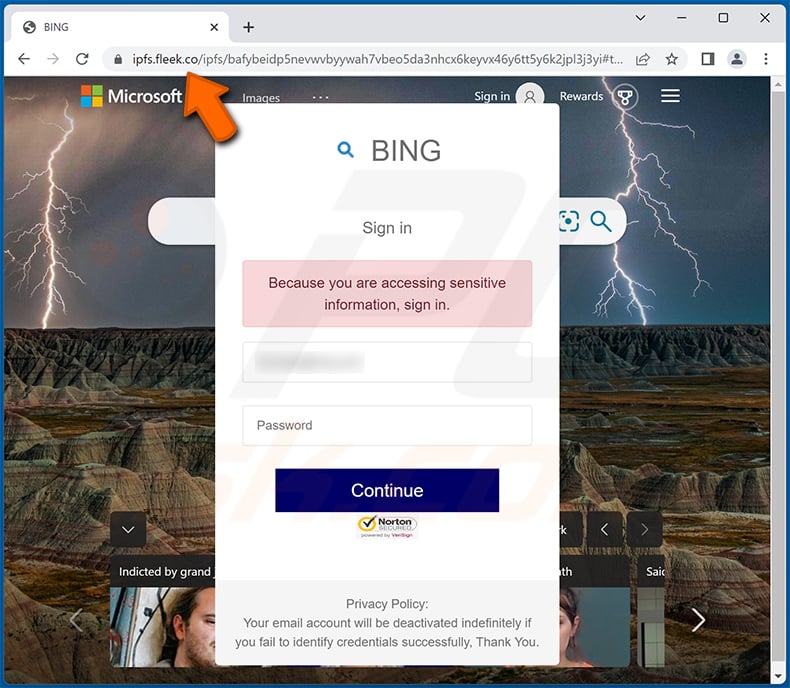
Yet another example of an email from cPanel spam campaign:
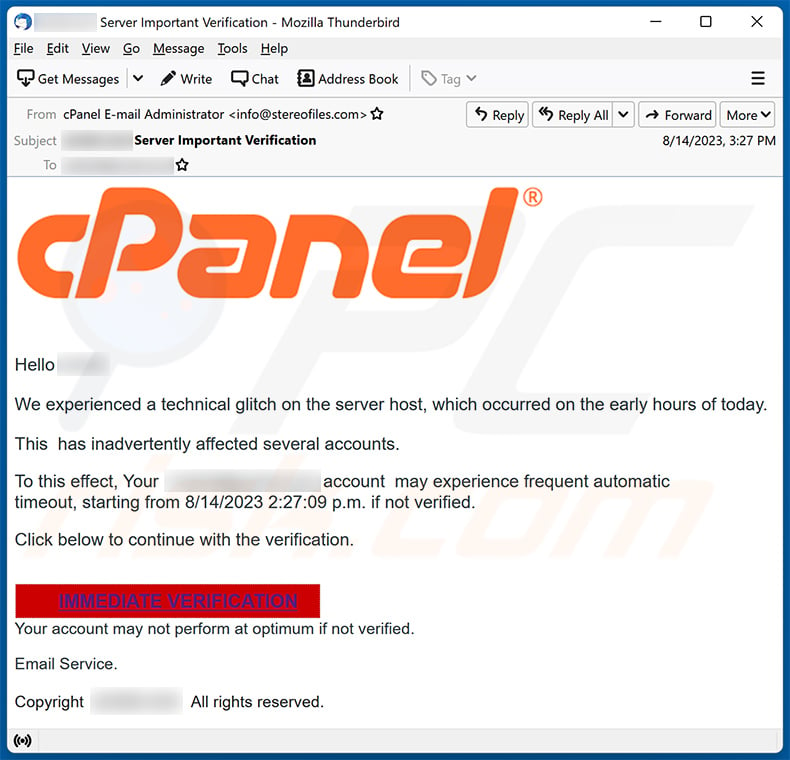
Text presented within:
Subject: ******** Server Important Verification
Hello ********
We experienced a technical glitch on the server host, which occurred on the early hours of today.
This has inadvertently affected several accounts.
To this effect, Your ******** account may experience frequent automatic timeout, starting from 8/14/2023 2:27:09 p.m. if not verified.
Click below to continue with the verification.
IMMEDIATE VERIFICATION
Your account may not perform at optimum if not verified.
Email Service.
Copyright ******** All rights reserved.
Instant automatic malware removal:
Manual threat removal might be a lengthy and complicated process that requires advanced IT skills. Combo Cleaner is a professional automatic malware removal tool that is recommended to get rid of malware. Download it by clicking the button below:
DOWNLOAD Combo CleanerBy downloading any software listed on this website you agree to our Privacy Policy and Terms of Use. To use full-featured product, you have to purchase a license for Combo Cleaner. 7 days free trial available. Combo Cleaner is owned and operated by RCS LT, the parent company of PCRisk.com.
Quick menu:
- What is cPanel spam?
- Types of malicious emails.
- How to spot a malicious email?
- What to do if you fell for an email scam?
Types of malicious emails:
![]() Phishing Emails
Phishing Emails
Most commonly, cybercriminals use deceptive emails to trick Internet users into giving away their sensitive private information, for example, login information for various online services, email accounts, or online banking information.
Such attacks are called phishing. In a phishing attack, cybercriminals usually send an email message with some popular service logo (for example, Microsoft, DHL, Amazon, Netflix), create urgency (wrong shipping address, expired password, etc.), and place a link which they hope their potential victims will click on.
After clicking the link presented in such email message, victims are redirected to a fake website that looks identical or extremely similar to the original one. Victims are then asked to enter their password, credit card details, or some other information that gets stolen by cybercriminals.
![]() Emails with Malicious Attachments
Emails with Malicious Attachments
Another popular attack vector is email spam with malicious attachments that infect users' computers with malware. Malicious attachments usually carry trojans that are capable of stealing passwords, banking information, and other sensitive information.
In such attacks, cybercriminals' main goal is to trick their potential victims into opening an infected email attachment. To achieve this goal, email messages usually talk about recently received invoices, faxes, or voice messages.
If a potential victim falls for the lure and opens the attachment, their computers get infected, and cybercriminals can collect a lot of sensitive information.
While it's a more complicated method to steal personal information (spam filters and antivirus programs usually detect such attempts), if successful, cybercriminals can get a much wider array of data and can collect information for a long period of time.
![]() Sextortion Emails
Sextortion Emails
This is a type of phishing. In this case, users receive an email claiming that a cybercriminal could access the webcam of the potential victim and has a video recording of one's masturbation.
To get rid of the video, victims are asked to pay a ransom (usually using Bitcoin or another cryptocurrency). Nevertheless, all of these claims are false - users who receive such emails should ignore and delete them.
How to spot a malicious email?
While cyber criminals try to make their lure emails look trustworthy, here are some things that you should look for when trying to spot a phishing email:
- Check the sender's ("from") email address: Hover your mouse over the "from" address and check if it's legitimate. For example, if you received an email from Microsoft, be sure to check if the email address is @microsoft.com and not something suspicious like @m1crosoft.com, @microsfot.com, @account-security-noreply.com, etc.
- Check for generic greetings: If the greeting in the email is "Dear user", "Dear @youremail.com", "Dear valued customer", this should raise suspiciousness. Most commonly, companies call you by your name. Lack of this information could signal a phishing attempt.
- Check the links in the email: Hover your mouse over the link presented in the email, if the link that appears seems suspicious, don't click it. For example, if you received an email from Microsoft and the link in the email shows that it will go to firebasestorage.googleapis.com/v0... you shouldn't trust it. It's best not to click any links in the emails but to visit the company website that sent you the email in the first place.
- Don't blindly trust email attachments: Most commonly, legitimate companies will ask you to log in to their website and to view any documents there; if you received an email with an attachment, it's a good idea to scan it with an antivirus application. Infected email attachments are a common attack vector used by cybercriminals.
To minimise the risk of opening phishing and malicious emails we recommend using Combo Cleaner Antivirus for Windows.
Example of a spam email:

What to do if you fell for an email scam?
- If you clicked on a link in a phishing email and entered your password - be sure to change your password as soon as possible. Usually, cybercriminals collect stolen credentials and then sell them to other groups that use them for malicious purposes. If you change your password in a timely manner, there's a chance that criminals won't have enough time to do any damage.
- If you entered your credit card information - contact your bank as soon as possible and explain the situation. There's a good chance that you will need to cancel your compromised credit card and get a new one.
- If you see any signs of identity theft - you should immediately contact the Federal Trade Commission. This institution will collect information about your situation and create a personal recovery plan.
- If you opened a malicious attachment - your computer is probably infected, you should scan it with a reputable antivirus application. For this purpose, we recommend using Combo Cleaner Antivirus for Windows.
- Help other Internet users - report phishing emails to Anti-Phishing Working Group, FBI’s Internet Crime Complaint Center, National Fraud Information Center and U.S. Department of Justice.
Frequently Asked Questions (FAQ)
Why did I receive this email?
Typically, phishing emails are sent to a large number of people. They are not personal.
I have provided my personal information when tricked by this email, what should I do?
If you have inadvertently provided your login credentials to a website that you suspect may be fraudulent, it is important to change your passwords immediately.
I have downloaded and opened a malicious file attached to this email, is my computer infected?
If you have downloaded and opened a malicious file attached to an email, there is a chance that your computer has been infected with malware. It depends on the type of file. For instance, malicious MS Office documents do not infect computers until users enable macros commands.
I have read the email but didn't open the attachment, is my computer infected?
Merely opening an email is harmless on its own. However, clicking links or opening attachments in the email can result in system infections.
Will Combo Cleaner remove malware infections that were present in email attachment?
Combo Cleaner has the ability to detect and remove nearly all known malware infections. It is important to note that advanced malware often hides deep within the system, so conducting a full system scan is recommended to ensure complete removal.
Share:

Tomas Meskauskas
Expert security researcher, professional malware analyst
I am passionate about computer security and technology. I have an experience of over 10 years working in various companies related to computer technical issue solving and Internet security. I have been working as an author and editor for pcrisk.com since 2010. Follow me on Twitter and LinkedIn to stay informed about the latest online security threats.
PCrisk security portal is brought by a company RCS LT.
Joined forces of security researchers help educate computer users about the latest online security threats. More information about the company RCS LT.
Our malware removal guides are free. However, if you want to support us you can send us a donation.
DonatePCrisk security portal is brought by a company RCS LT.
Joined forces of security researchers help educate computer users about the latest online security threats. More information about the company RCS LT.
Our malware removal guides are free. However, if you want to support us you can send us a donation.
Donate
▼ Show Discussion